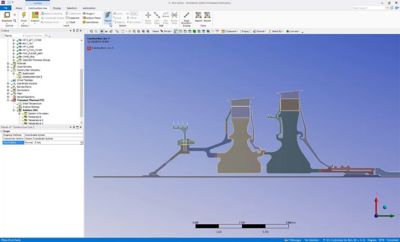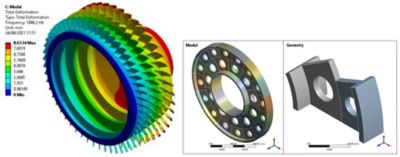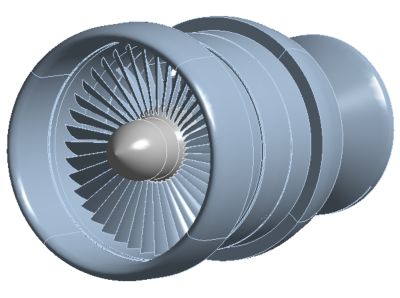-
-
Access Free Student Software
Ansys empowers the next generation of engineers
Students get free access to world-class simulation software.
-
Connect with Ansys Now!
Design your future
Connect with Ansys to explore how simulation can power your next breakthrough.
Countries & Regions
Free Trials
Products & Services
Learn
About
Back
Products & Services
Back
Learn
Ansys empowers the next generation of engineers
Students get free access to world-class simulation software.
Back
About
Design your future
Connect with Ansys to explore how simulation can power your next breakthrough.
Free Trials
ANSYS BLOG
May 2, 2023
From CAD to CAE: How Ansys Gateway Powered by AWS Can Transform Industrial Engineering
Industrial engineering is complex. It often involves optimizing systems and processes to increase efficiency and reduce costs while also mitigating risk of failure and short time to market. With the fast-paced advancement of manufacturing technologies and the rising demand for customized products, industrial engineers are facing new and ever-evolving challenges. One of the biggest challenges is the need for accurate and timely simulations to test and validate designs before they are implemented. Traditionally, engineers have relied on on-premises software and hardware to run these simulations, which can be expensive, time consuming, and limited in scalability.
Some of these daily challenges often include large models of mixed dimensionality (i.e., 2D and 3D elements). This oftentimes consists of hundreds or thousands of load steps, in the case of fluid network modeling and/or flight mission definition. For these use cases, a full transient thermal analysis will be run through all the load steps, then a nonlinear static structural analysis is performed for every load step to receive time-dependent stresses. These analyses can often take days or weeks to run due to moderate-size models needing to be run for many time points. However, switching to cloud enables more cores to be used to reduce simulation time and remove hardware barriers.

Fluid network modeling
Cloud computing solves storage challenges. For example, for a multistage cyclic analysis, users will look at hundreds of mode shapes in which solve times can be long and result files are enormous (hundreds of gigabytes, or even terabytes). To speed up analyses, these models are often run via high-performance computing (HPC), taking advantage of more cores. Cloud computing facilitates the enormous data management to access extra storage on demand, and remote postprocessing eliminates the need to download large result files.

Multistage cyclic analysis
Another example is fan blade simulation. Modeling fan blades and simulating a bird strike or loss of blades in high-speed compressors or turbines uses explicit formulations and requires high mesh counts. To avoid weeks of simulation, cloud computing enables the simulation to be run with thousands of central processing units (CPUs).

Blade CAD design
Cloud computing has revolutionized the way engineering simulations are performed. With the ability to access virtually unlimited computing power and storage, engineers can now run simulations in the cloud without the need for expensive on-premises hardware. Ansys Gateway powered by AWS offers industrial engineers the ability to perform computer-aided design (CAD) and computer-aided engineering (CAE) simulations in the cloud.
By using the cloud, industrial engineers can expect to access their results as needed, independently from where they are working. This also helps make manufacturers more agile by accessing faster results that can minimize defects and lead time. It enables more flexibility and ease of production, and the cloud also improves communication with customers because changes can be made with direct end-user feedback. Finally, it can also reduce costs and enable new software version adoption. Keep in mind that because there is no local hardware, there is also no need for maintenance costs.
Whether you're a seasoned industrial engineer or just getting started in the field, the webinar "Enhance Your Industrial Simulation Capabilities by Leveraging the Power of Simulation in the Cloud" will provide valuable insights into the power of simulation in the cloud.